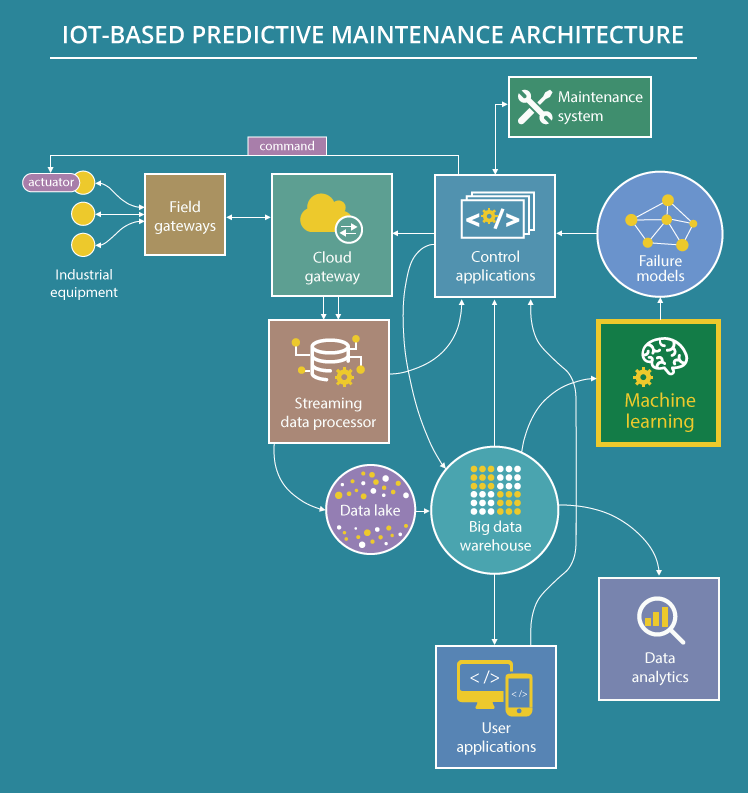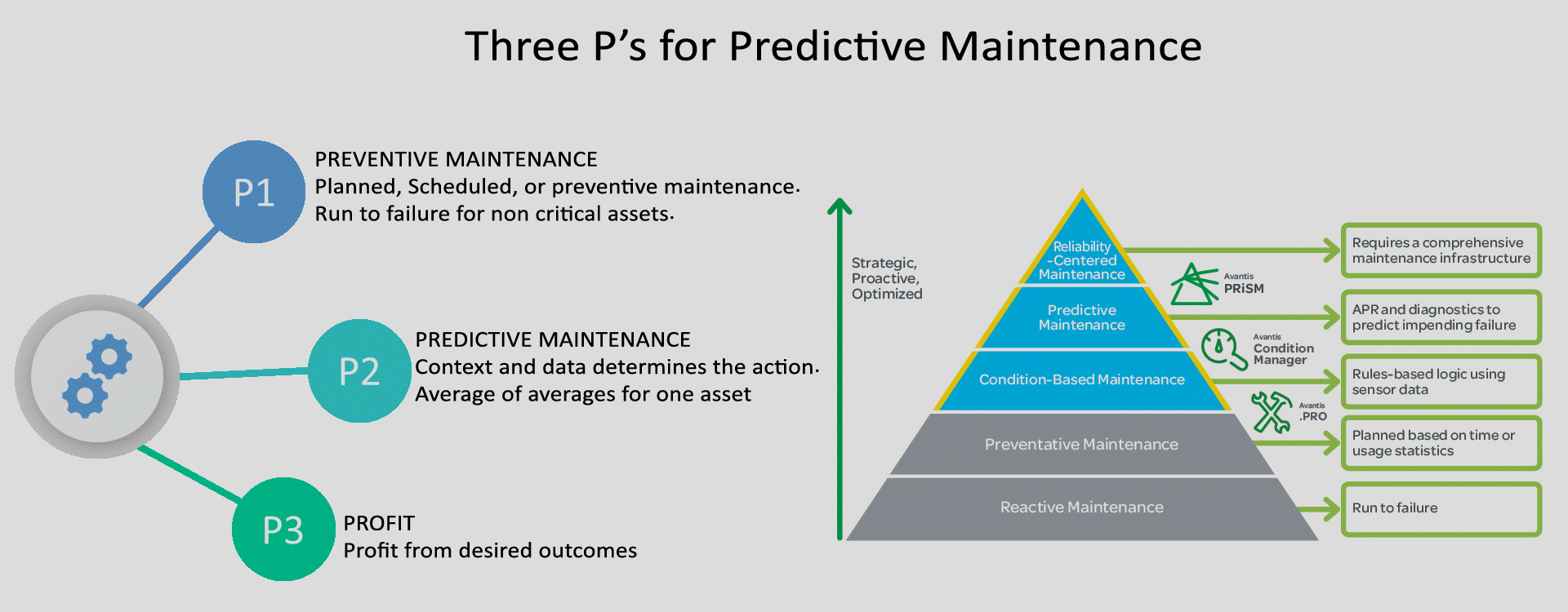
KNOWING THE FUTURE OF MAINTENANCE. PREDICTIVE MAINTENANCE 4.0
Predictive maintenance for industry 4.0 is a method of preventing asset failure by analyzing production data to identify patterns and predict issues before they happen. Predictive maintenance uses condition-monitoring equipment to evaluate an asset’s performance in real-time for optimal use of machines. A key element in this process is the Internet of Things (IoT). IoT allows for different assets and systems to connect, work together, and share, analyze and action data. There are three facets of condition monitoring: online, periodic and remote.
Once your equipment is connected, you need to start analyzing its parameters for failure. Here are some of the parameters that are commonly monitored and analyzed:

Benefits of Predictive Maintenance
When predictive maintenance is working effectively as a maintenance strategy, maintenance is only performed on machines when it is required. That is, just before failure is likely to occur. This brings several cost savings:

Why is predictive maintenance important?
Fixing something before it breaks is more efficient and cost-effective than fixing it after it breaks. It helps…
Levels to Achieve Digital Transformation
Predictive maintenance could be seen as a competitive advantage for oil and gas companies as well as the related service businesses, particularly during times of a recession when organizations are forced to find ways to work more efficiently and effectively. Of course, predictive maintenance does not just pertain to the manufacturing, rail, and oil and gas industries. In other applications, PdM is used to:
